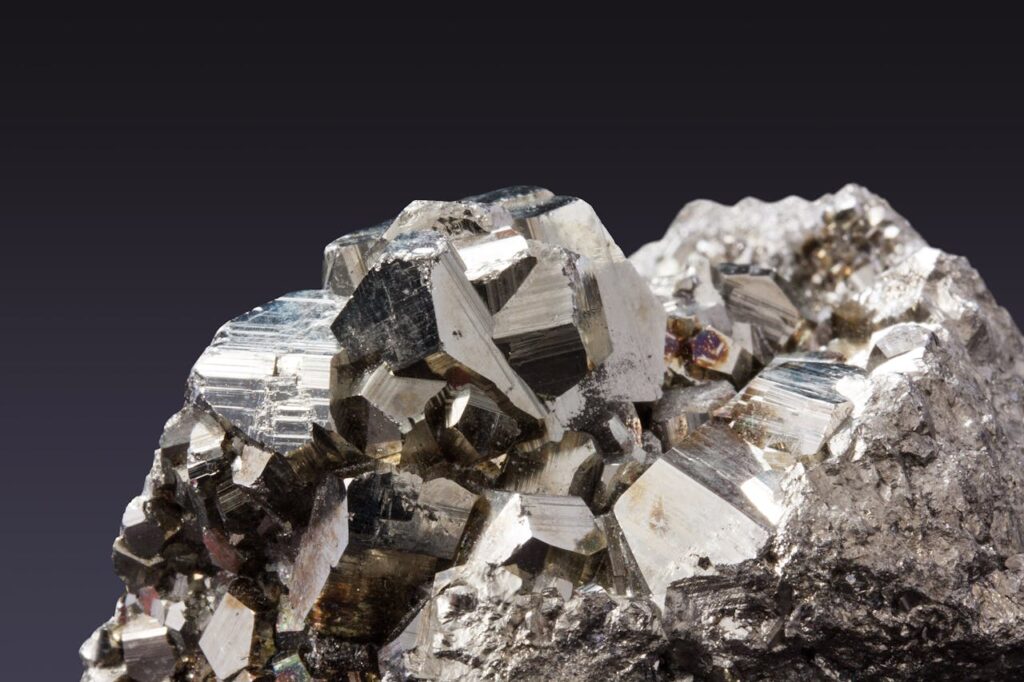
Explore & Play
Discover interesting topics and solve the accompanying crossword puzzle.
Mineral Crossword | Essential Minerals and Their Uses
Table of Contents
Before diving into the fascinating world of minerals, we invite you to engage with our Mineral crossword. You can test your knowledge first and then explore the article for additional insights, or if you’re less familiar with the topic, feel free to read the article first and return to the crossword for a fun challenge. Either way, you’re in for an enlightening experience!
Mineral Crossword
You can either fill in the crossword puzzle directly on this page or click the button in the bottom right corner to print it for free.

Mineralogy 101: Essential Minerals That Shape Our World
Minerals are the building blocks of the Earth, forming the foundation of countless natural processes and human innovations. Found everywhere, from the depths of the Earth’s crust to the jewelry we wear, these fascinating substances shape the world around us in profound ways. Minerals vary greatly, from the common to the rare, the industrially useful to the aesthetically beautiful. This article delves into the essential minerals that make up our planet, their significance in our daily lives, and their captivating characteristics.
In addition to exploring these minerals, there’s an exciting way to test your knowledge: a mineral-themed crossword puzzle. Throughout the article, we’ll cover the minerals featured in the puzzle, giving you both a learning experience and a fun challenge.
1. The Fundamentals: What Are Minerals?
To understand the essential role of minerals, it’s important to first define what qualifies as a mineral. Minerals are naturally occurring, inorganic solids with a defined chemical composition and a crystalline structure. This distinct crystal arrangement gives minerals their specific shapes and physical properties, such as hardness, color, and luster.
Some of the most common minerals on Earth include quartz, feldspar, calcite, and gypsum. Quartz is one of the most abundant minerals, prized for its versatility and durability. It’s found in everything from electronics to countertops. Feldspar, another prevalent mineral, plays a key role in the formation of rocks and is also used in ceramics and glassmaking. Calcite, known for its stunning optical properties, is often found in limestone and marble, while gypsum is vital in the production of plaster and drywall.
These minerals may seem ordinary, but they are critical to our understanding of Earth’s geological processes and are integral to many industries.
2. Silicates: The Building Blocks of the Earth’s Crust
Silicate minerals make up over 90% of the Earth’s crust, making them indispensable to understanding Earth’s geology. These minerals are composed of silicon and oxygen, the two most abundant elements in the Earth’s crust. Their structures range from simple to highly complex, influencing their physical properties and uses.
Among the most important silicates are feldspar, quartz, zircon, and epidote. Feldspar is not only the most common silicate but also essential in the formation of igneous rocks like granite. Quartz, with its durable, hexagonal crystal structure, is used in glass production and timepieces due to its piezoelectric properties. Zircon, though less abundant, is essential for dating geological formations, helping scientists understand Earth’s age. Epidote, found in metamorphic rocks, adds a vibrant green color to many rock formations and is sometimes sought after by collectors.
Silicates truly form the backbone of the Earth’s crust, influencing both natural landscapes and human technology.
3. Industrial Giants: Minerals Powering Modern Technology
Many of the minerals we encounter today are critical to modern industries and technological advancements. From construction materials to vital components of electronics, minerals play an integral role in powering our daily lives.
Take bauxite, for example, the primary ore of aluminum. This mineral is used to produce lightweight yet strong materials essential in aviation, automobiles, and packaging. Magnetite, an iron ore, is indispensable for steel production, which forms the backbone of modern infrastructure. Molybdenite, the main source of molybdenum, is essential in creating high-strength steel alloys used in construction and machinery. And pyrite, also known as “fool’s gold,” has long been used for its sulfur content in producing sulfuric acid, which is vital to various industries.
These industrial minerals are often mined in large quantities due to their economic importance, making them essential players in the global economy. Without them, modern technology and infrastructure would come to a standstill.
4. Sparkling Gems: The Aesthetic Appeal of Minerals
While some minerals have practical uses, others are treasured for their sheer beauty and visual appeal. These minerals, often found as gemstones, are prized for their unique colors, transparency, and brilliance. Their aesthetic properties make them highly sought after in jewelry and decorative arts.
Fluorite, for example, is known for its wide range of colors and is often used as a decorative stone. Lapis lazuli, with its deep blue hue, has been used for centuries in jewelry and even as a pigment in artwork. Garnet, found in a variety of shades from red to green, is popular as a gemstone and in abrasives. Tourmaline is another multi-colored gem that is highly prized for its stunning appearance and electric properties.
These minerals not only captivate with their beauty but also hold significant cultural value across the world. Their transformation from raw minerals to polished gemstones is a fascinating journey in itself.
5. Rare Finds: Minerals with Unique Properties
Certain minerals stand out for their unique properties or rare occurrence in nature. These rare minerals may not always be economically significant, but they fascinate scientists and collectors alike.
Staurolite, for instance, is known for its distinctive cross-shaped crystals, making it a favorite among collectors. Sphene, also called titanite, is highly prized for its exceptional luster and dispersion, rivaling even diamonds in brilliance. Apatite is often confused with other minerals, but its unique composition makes it important in the production of fertilizers. Rutile is another remarkable mineral, primarily used in the production of titanium, a metal crucial for aerospace and medical industries.
These minerals are often found in small quantities, and their distinct characteristics make them invaluable for scientific research and collectors alike.
6. The Formation of Minerals: From Deep Within the Earth
Minerals are formed through a variety of geological processes, some deep within the Earth’s crust and others near the surface. These processes include crystallization from magma, precipitation from solutions, and metamorphism.
For example, apatite often forms in igneous rocks, while calcite can crystallize from water solutions in caves, creating beautiful stalactites and stalagmites. Epidote and garnet are typical metamorphic minerals, forming under high-pressure and high-temperature conditions. These minerals, shaped by extreme geological forces, tell a story of the Earth’s dynamic processes.
Understanding how minerals form is essential for geologists and helps explain the diverse array of minerals we find on the planet. The variety in formation processes results in the unique properties and uses of each mineral.
7. Everyday Minerals: Unsung Heroes of Daily Life
Many of the minerals we use in everyday life go unnoticed, despite their vital contributions to modern living. These everyday minerals may not sparkle like gems, but they are indispensable to the world around us.
Gypsum, for instance, is a key component in plaster and drywall, making it essential for construction. Calcite, found in limestone and marble, is vital in cement production, contributing to the backbone of infrastructure. Feldspar, used in ceramics and glass, is crucial for making everything from kitchenware to solar panels.
These unsung minerals are often mined in large quantities, serving as the foundation for industries that shape our daily lives. Without them, modern construction, manufacturing, and even technology would struggle to function.
8. Minerals and Earth’s History: Dating and Discovery
Minerals don’t just tell us about the present—they also reveal secrets about Earth’s past. By studying the minerals within rocks, geologists can date geological formations and piece together the history of the Earth.
Zircon is one of the most important minerals in this regard. Its ability to withstand geological processes makes it a reliable tool for dating some of the oldest rocks on Earth. Similarly, minerals like staurolite and apatite found in metamorphic rocks provide clues to the tectonic activity and environmental changes that have shaped the Earth over millions of years.
By studying these minerals, we gain insight into how our planet evolved, from its early days as a molten mass to the complex world we live in today.
9. Collecting Minerals: A Fascinating Hobby
For those drawn to the beauty and mystery of the Earth’s natural treasures, mineral collecting is both a rewarding and educational hobby. Collectors are fascinated by the diversity of minerals, from common finds like garnet and fluorite to rare specimens like staurolite.
When collecting, enthusiasts often use tools to test hardness, luster, and crystal form, helping them identify minerals in the field. For instance, tourmaline and lapis lazuli are often prized for their vibrant colors, while garnet is appreciated for its rich variety of forms and shades.
Collecting minerals offers a deeper understanding of the natural world, providing both aesthetic enjoyment and scientific insight.
The Enduring Importance of Minerals: Shaping the World, Past and Present
From the simplest grains of sand to the most dazzling gemstones, minerals continue to play an essential role in shaping the world around us. They are the foundation of our natural environment, critical to industries, and a source of wonder and beauty. Minerals tell the story of the Earth’s history while continuing to power the technologies of the future.
As we marvel at these natural treasures, why not engage further with this captivating subject? Try your hand at the mineral crossword puzzle to challenge your knowledge and discover even more about the fascinating world of minerals! Whether you’re looking to test your memory or learn something new, the crossword is a perfect way to deepen your appreciation for these essential elements that shape our lives.
Share to...
I hope you enjoy the content.
Want to receive our daily crossword puzzle or article? Subscribe!
You may also be interested in
Share to…
Want to receive our daily crossword puzzle?
-
Jigsaw Puzzles
Zodiac Ink Dog Puzzle: Artful Elegance 250 | 300 | 500 Pieces
kr 348,00 – kr 439,00Price range: kr 348,00 through kr 439,00 Select options This product has multiple variants. The options may be chosen on the product page -
Jigsaw Puzzles
Vigeland Park Fantasy Puzzle 250 | 300 | 500 Pieces
kr 348,00 – kr 439,00Price range: kr 348,00 through kr 439,00 Select options This product has multiple variants. The options may be chosen on the product page -
Jigsaw Puzzles
Cat & Sunset Wooden Jigsaw Puzzle 250 | 300 | 500 Pieces
kr 348,00 – kr 439,00Price range: kr 348,00 through kr 439,00 Select options This product has multiple variants. The options may be chosen on the product page

















